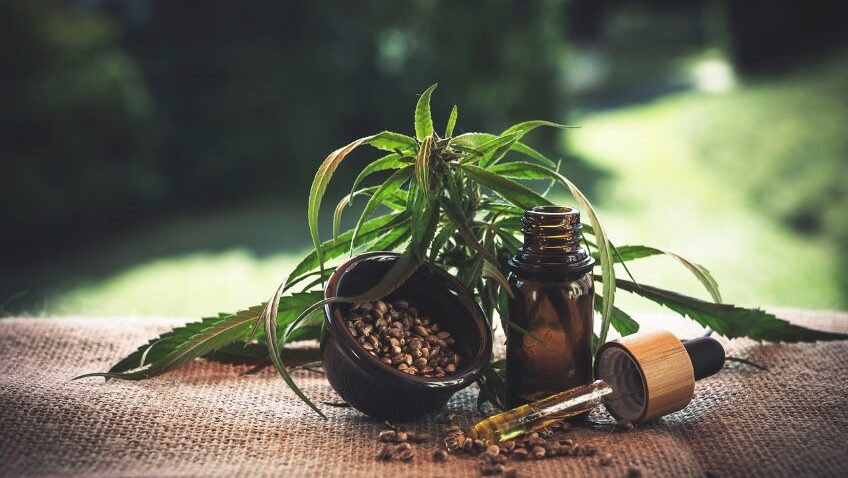In the modern era, the debate surrounding cannabis use has evolved into a complex discourse, shaped by shifting cultural norms, medical advancements, and legal considerations. However, the story of cannabis extends far beyond contemporary discussions, weaving through the fabric of human history for thousands of years. This historical perspective on cannabis use unveils a fascinating journey that transcends geographical boundaries and cultural divides, revealing a plant deeply embedded in the tapestry of human civilization.
The Rise of Edibles UK and Global Cannabis Culture:
One notable development in the contemporary cannabis landscape is the rise of edibles UK and globally. Edibles, which encompass a wide range of cannabis-infused food and beverages, have gained popularity among consumers seeking alternative consumption methods. From artisanal chocolates to infused beverages, edibles offer a discreet and convenient way to experience the effects of cannabis.
In the United Kingdom, where cannabis laws are more restrictive compared to some other jurisdictions, the emergence of edibles represents a cultural shift towards more diverse and sophisticated cannabis products. While regulatory frameworks continue to evolve, the growing demand for edibles underscores the evolving attitudes towards cannabis and its potential role in mainstream culture.
Ancient Roots:
To truly understand the historical significance of cannabis, one must delve into its ancient roots. Archaeological evidence suggests that cannabis was used by ancient civilizations for various purposes, ranging from religious rituals to medicinal applications. The earliest known use dates back to ancient China around 5000 BCE, where cannabis seeds were utilized for food, and the plant was recognized for its medicinal properties.
As civilizations blossomed, so did the multifaceted use of cannabis. In ancient India, cannabis found its way into religious rituals and Ayurvedic medicine, with the sacred text Atharva Veda describing it as one of the five sacred plants. Cannabis played a role in both spiritual and medicinal realms, reflecting the intertwined nature of its historical journey.
Cannabis in Ancient Cultures:
Moving westward, the ancient Scythians, a nomadic Indo-European people, incorporated cannabis into their burial rituals around 500 BCE. Archaeological findings in Siberia revealed evidence of cannabis seeds and plant material alongside the remains of individuals, suggesting a connection between the plant and spiritual practices.
The ancient Egyptians, too, were familiar with cannabis, using it for medicinal purposes. Ebers Papyrus, an ancient Egyptian medical text dating back to 1550 BCE, mentions cannabis as a remedy for various ailments, showcasing its therapeutic value in one of the oldest recorded medical documents.
Cannabis in the Middle East and Beyond:
Traversing through time and space, cannabis made its mark in the Middle East. Ancient civilizations such as the Assyrians and Babylonians embraced the plant for its medicinal properties, recognizing its potential as a treatment for various ailments.
Cannabis also found its way into ancient Greece, where the renowned physician Dioscorides acknowledged its medicinal applications in his work “De Materia Medica” during the first century CE. As trade routes expanded, so did the dissemination of cannabis knowledge, contributing to its integration into diverse cultures.
The Silk Road: Cannabis on the Move:
The historic Silk Road, a network of trade routes connecting the East and West, facilitated the exchange of goods, ideas, and cultural practices, including the spread of cannabis knowledge. Cannabis seeds and plants travelled along this ancient highway, leaving an indelible mark on the diverse societies it encountered.
In medieval Islamic civilizations, cannabis was explored for both its medicinal and recreational potential. Avicenna, the influential Persian polymath, praised cannabis in his medical writings, further cementing its place in the pharmacopoeia of the time.

Colonialism and the Global Spread:
The Age of Exploration and colonialism marked a new chapter in the history of cannabis. European explorers encountered cannabis in various parts of the world, and as colonial powers expanded their empires, they introduced the plant to different regions. The use of cannabis by indigenous populations often clashed with the cultural norms of the colonizers, leading to a complex interplay of acceptance and prohibition.
Cannabis in the Americas:
In the Americas, cannabis had a long history before the arrival of European colonizers. Native American tribes such as the Ojibwe and the Lakota utilized cannabis for medicinal and spiritual purposes. However, as European settlers established colonies, attitudes toward cannabis diverged.
In the 17th century, hemp cultivation became a crucial economic activity in the American colonies, with the plant valued for its strong fibres. Hemp was used for textiles, rope, and paper, contributing to the economic development of the region.
Prohibition and Stigmatization:
As the 20th century unfolded, a dark cloud descended upon cannabis. The temperance movement and the broader push for drug prohibition in the United States culminated in the Marihuana Tax Act of 1937, effectively criminalizing cannabis. The stigma surrounding the plant intensified, fuelled by misinformation and racial biases.
The Post-War Era and Counterculture:
The mid-20th century saw a seismic shift in societal attitudes towards cannabis. The counterculture movements of the 1960s embraced cannabis as a symbol of rebellion against established norms. Music, literature, and art of the time often glorified cannabis use, challenging the prevailing narrative of prohibition.
Medical Cannabis Renaissance:
In recent decades, the pendulum has swung back towards recognizing the medicinal potential of cannabis. The discovery of the endocannabinoid system in the human body shed light on the physiological mechanisms underlying the plant’s therapeutic effects. Medical cannabis programs have been implemented in various countries and states, providing patients with access to cannabis-based treatments for conditions like chronic pain, epilepsy, and nausea associated with chemotherapy.
Cannabis in the 21st Century:
The 21st century has witnessed a paradigm shift in cannabis policy, with an increasing number of jurisdictions legalizing its recreational and medicinal use. Uruguay became the first country to fully legalize cannabis in 2013, followed by Canada in 2018. In the United States, a growing number of states have embraced legalization, reflecting changing public attitudes and a more nuanced understanding of the plant.
Conclusion:
The historical perspective on cannabis use is a journey through time, highlighting the intricate relationship between humans and this versatile plant. From ancient rituals to modern medical applications, cannabis has been an integral part of human civilization, contributing to cultural practices, economic development, and medicinal advancements. As society continues to grapple with the complexities of cannabis use, acknowledging its rich historical tapestry can provide valuable insights into the multifaceted nature of this ancient ally.




